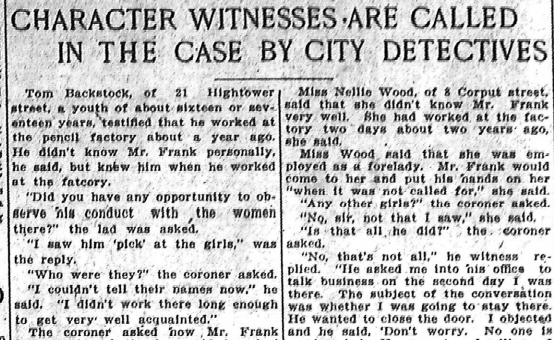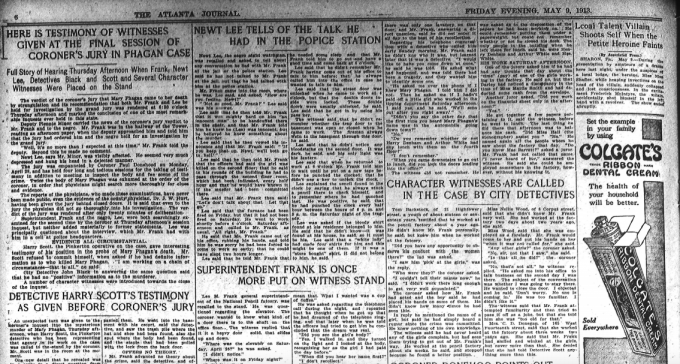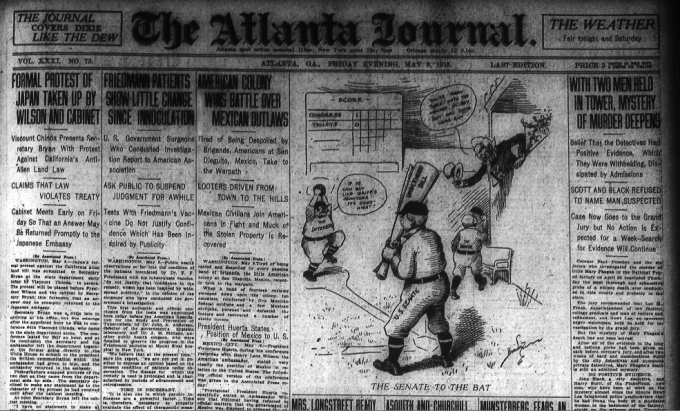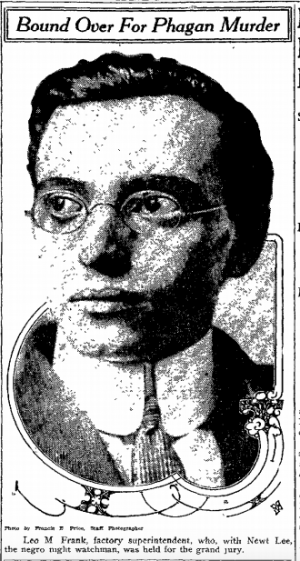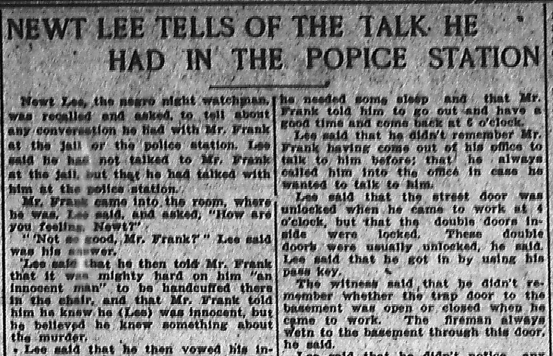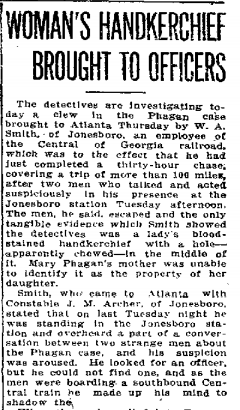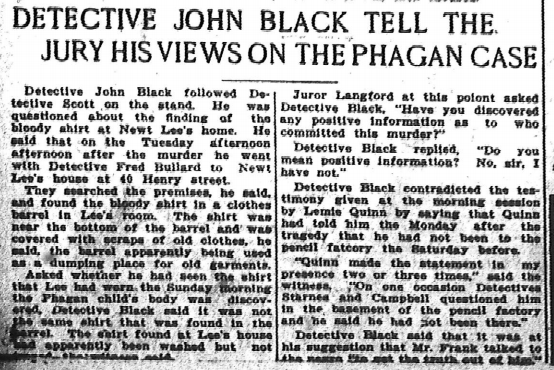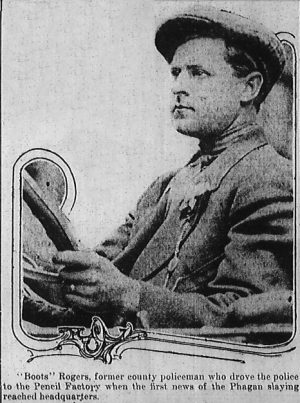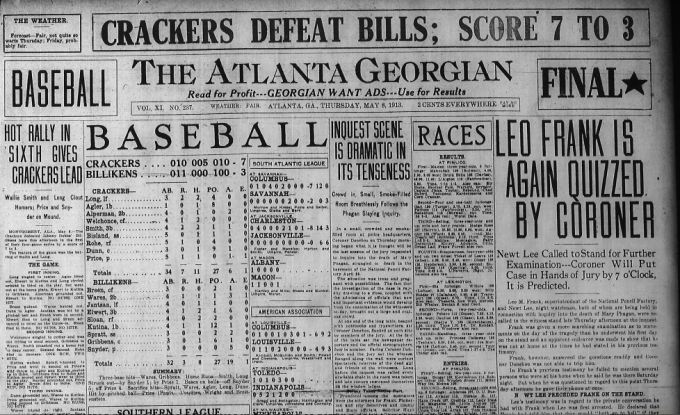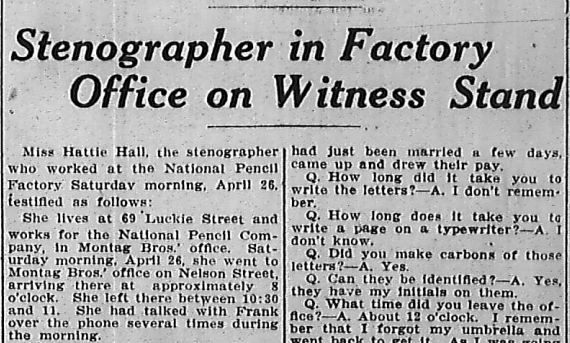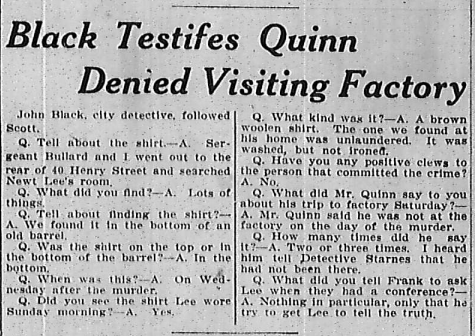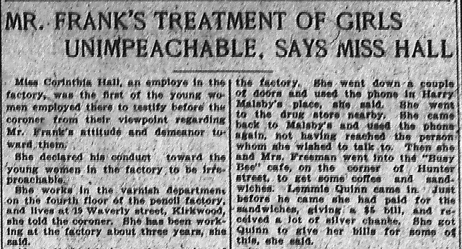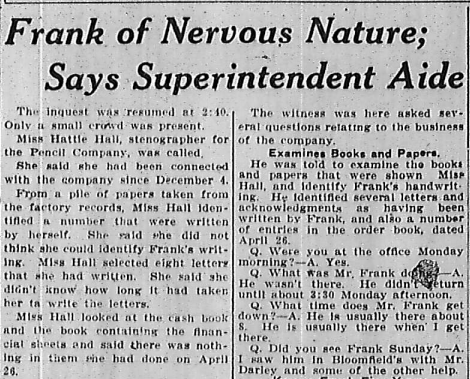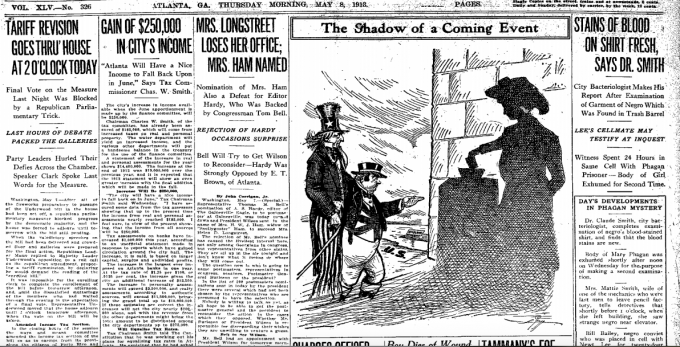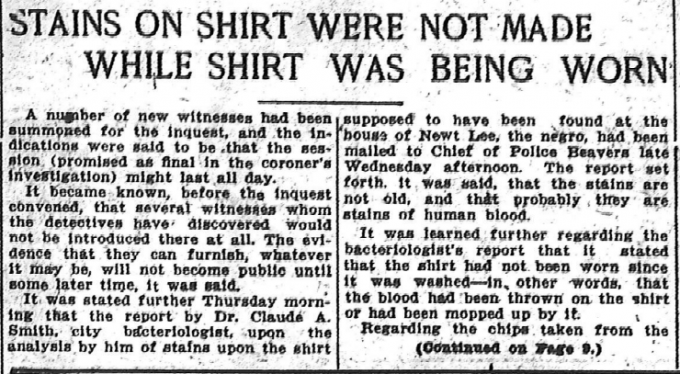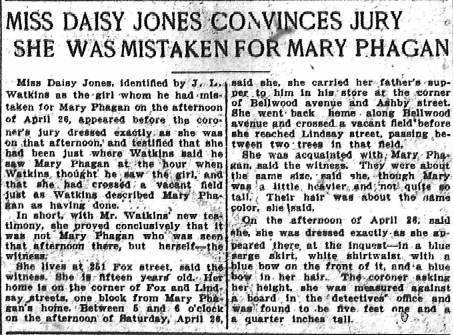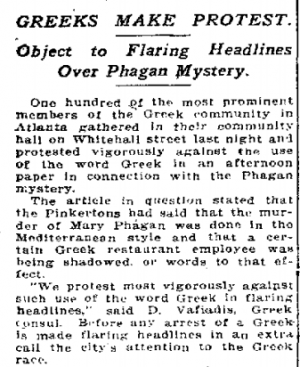Another in our series of new transcriptions of contemporary articles on the Leo Frank case.
Atlanta Journal
Friday, May 9th, 1913
Tom Backstock, of 21 Hightower street, a youth of about sixteen or seventeen years, testified that he worked at the pencil factory about a year ago. He didn’t know Mr. Frank personally, he said, but knew him when he worked at the factory.
“Did you have any opportunity to observe his conduct with the women there?” the lad was asked.
“I saw him ‘pick’ at the girls,” was the reply.
“Who were they?” the coroner asked.
“I couldn’t tell their names now,” he said. “I didn’t work there long enough to get very well acquainted.”
The coroner asked how Mr. Frank had acted and the boy said he had placed his hands on some of them. He didn’t know how many times he had seen this.
In reply he mentioned the name of a girl, but said he had simply heard a rumor since the crime was committed. He knew nothing of his own knowledge. Continue Reading →

